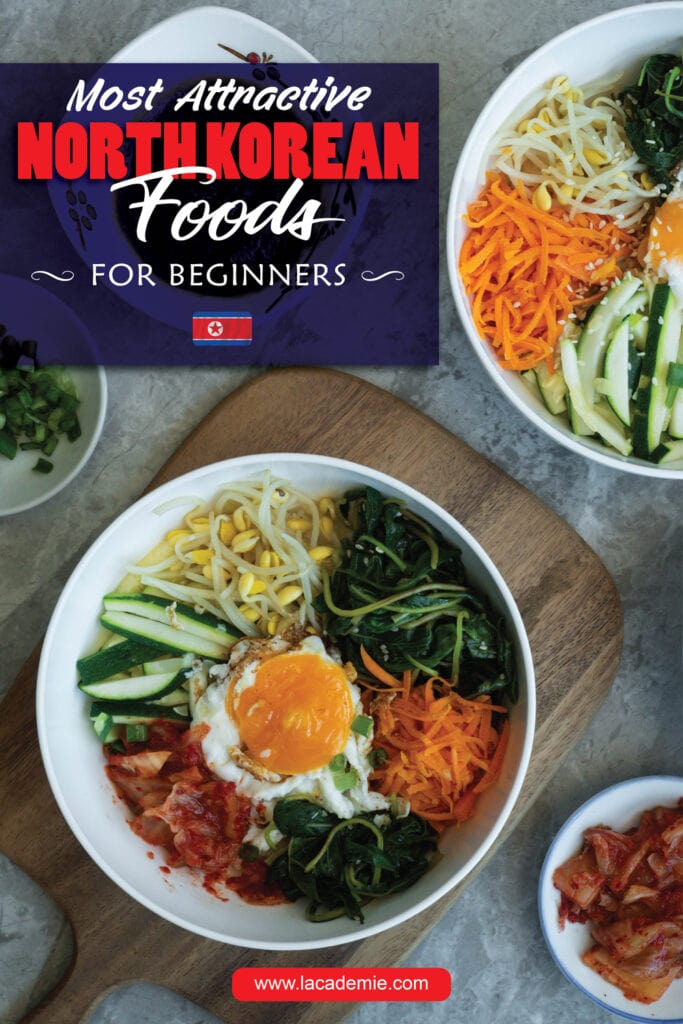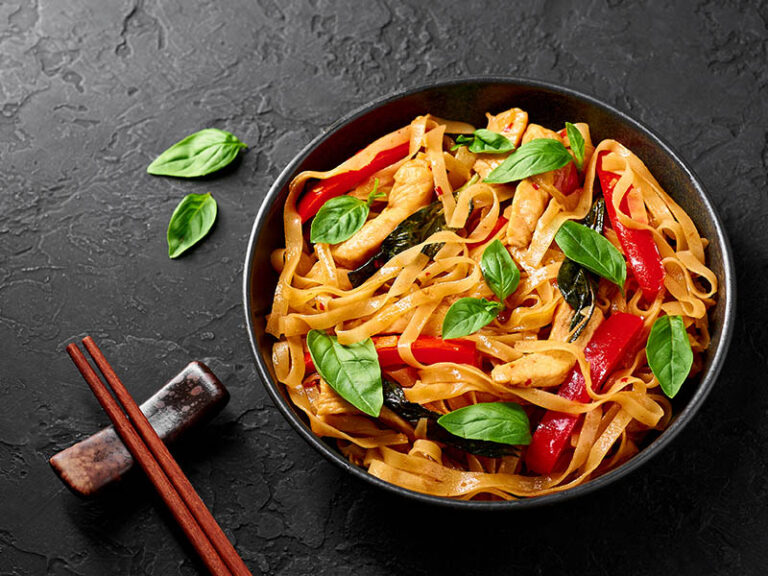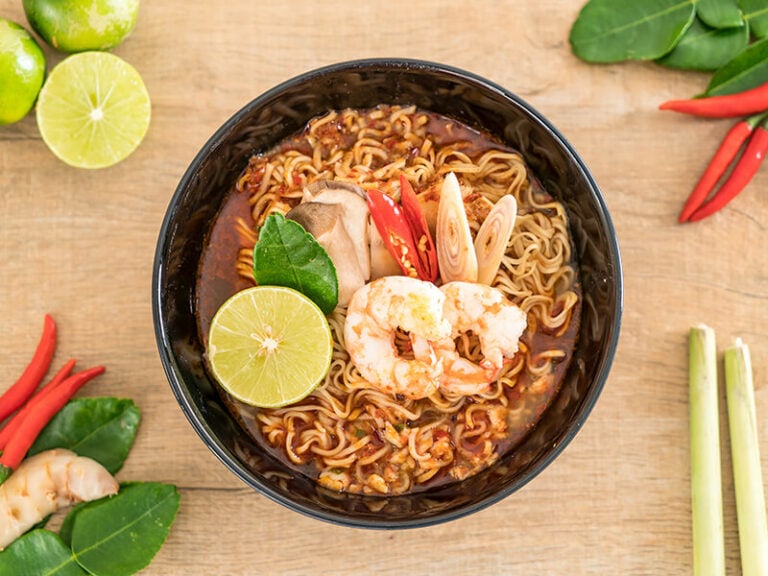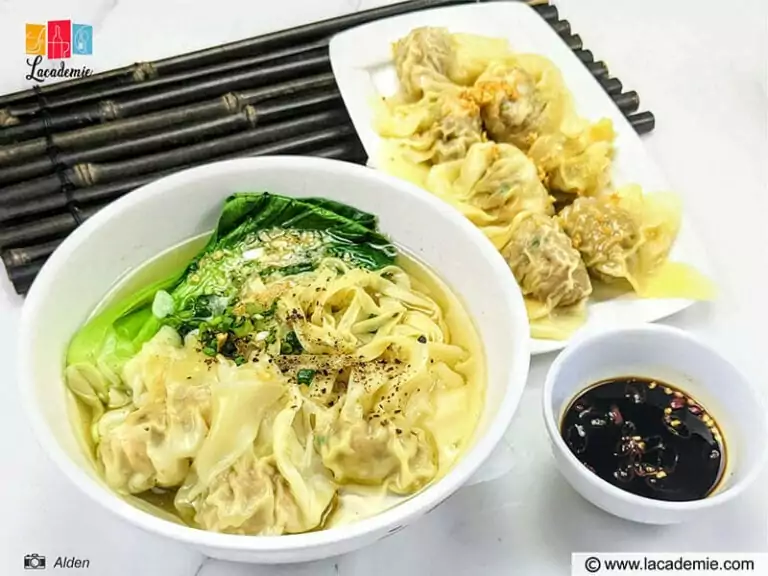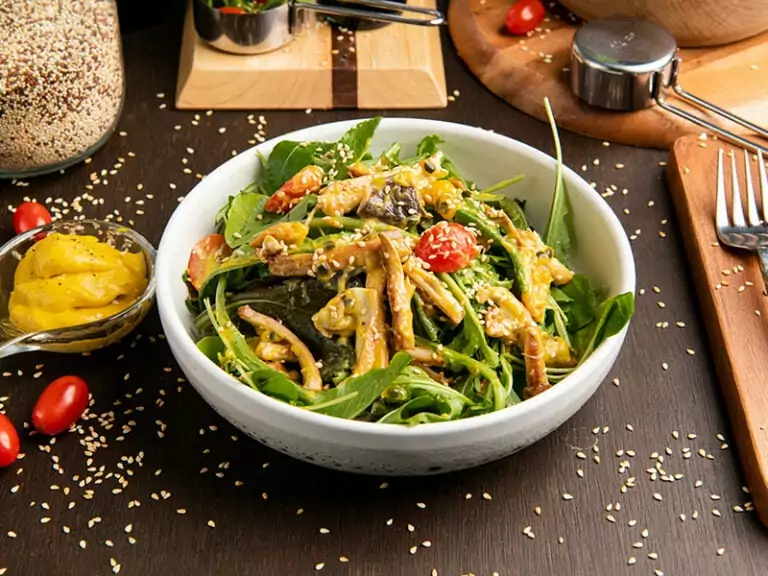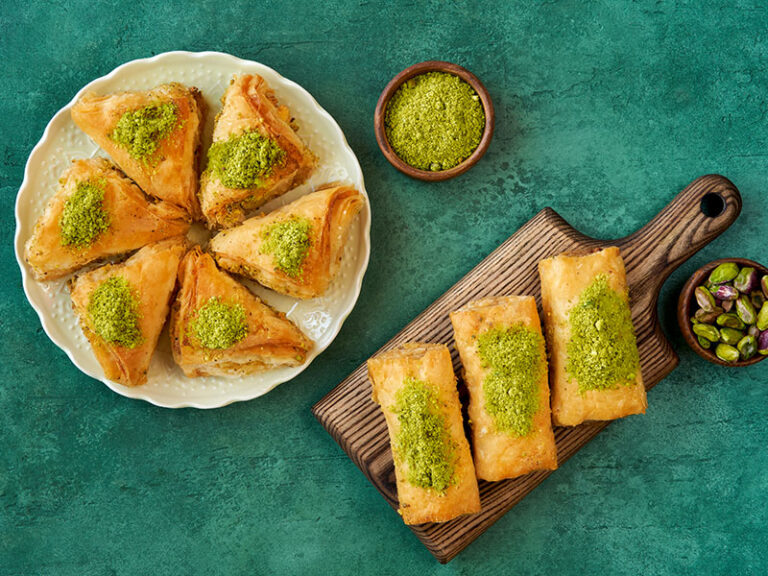Are North Korean foods similar to other Korean dishes that you and I all know? The answer is yes because they share historic traditions dating back thousands of years. Yet, it is also a big no since the northern dishes possess many characteristics unique to their distinct conditions.
While the world is losing against the invasion of South Korean foods, the chances of you enjoying North Korean cuisine are relatively slim. But with some luck, such as reading this post, you can have a taste of the delicious dishes from the frozen north.
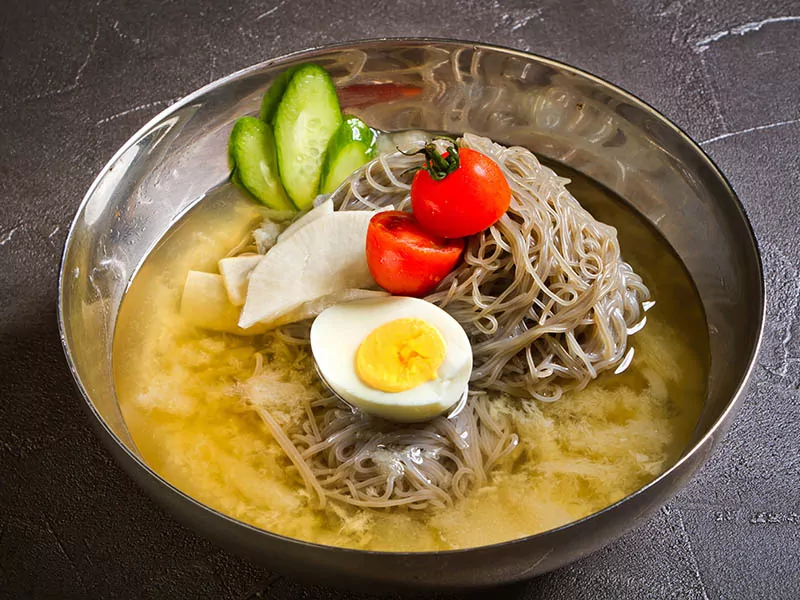
Brief Overview Of North Korean Cuisine
Let’s discover the enticing world of North Korean delicacy by delving into its unique characteristics, dining scene, and cultural influences.
Characteristics Of North Korean Dishes
North Korean cuisine is known for its simplicity, bold and plain flavors, and a focus on locally sourced ingredients. It strikes a delicate balance between spicy, savory, and tangy notes, reflecting the nation’s unique gastronomic identity.
Typical North Korean Meal
A traditional North Korean meal revolves around staple foods such as rice or noodles, complemented by an assortment of side dishes, soups, and stews. While some dishes are shared with South Korea, the availability and quality of North Korean cuisine can be significantly influenced by sociopolitical class divides.
Dining Scene In Pyongyang
The dining scene in North Korea, particularly in its capital, Pyongyang, showcases a wide range of options. However, accessibility to restaurants can be limited for average North Korean citizens, as tourists and wealthier locals often frequent these establishments, especially upscale ones.
Donju: The Affluent Middle Class
The term “donju” translates to “masters of money” and refers to those holding influential positions in government, state-owned businesses, or the importation of products into the country.
Upscale restaurants typically cater to high-ranking government officials, the emerging affluent middle class (donju), and international tourists.
Street Food Culture
In recent years, North Korea has seen the emergence of street food culture, with food stalls popping up in cities like Pyongyang. The country even welcomed its first pizzeria in 2009, reflecting a shift in culinary trends.
Alcoholic Beverages In North Korea
Alcoholic beverages are also produced and consumed in North Korea, with a legal drinking age of 18, adding another layer to the nation’s vibrant food and drink landscape.
North Vs. South Korean Cuisine
Despite their shared roots, the cuisines of North and South Korea have evolved differently, thanks in part to the broader Korean diaspora and varying regional influences.
North Korean cuisine is often praised for its freshness and authenticity. On the other hand, South Korean food has been influenced by global culinary trends, including American flavors, lending it a contemporary flair.
The exchange between North and South Korean cultures has led to a fascinating interplay of flavors and dishes. For example, following the Korean War, families migrating from North to South Korea brought with them treasured recipes that soon became integral to the South Korean diet.
However, it’s important to note that despite this blending of culinary traditions, there are notable differences in the flavors and compositions of certain dishes.
North Korean dishes often exhibit a unique tanginess, achieved through the artful combination of sweet, sour, pungent, and spicy ingredients. In contrast, South Korean preparations may be spicier and less varied in composition, showcasing the nation’s love for heat and bold flavors.
In essence, the cuisines of North and South Korea may be “same same, but different,” as the Thais would say.
While they both spring from the same culinary family tree, each has blossomed into its distinct and delicious flavor profile, giving food lovers an opportunity to explore and appreciate the nuances of the cuisine. It’s time to move on to the delectable selection of North Korean dishes!
North Korean Rice Dishes
North Korean cuisine features a diverse array of rice dishes. These mouthwatering, hearty creations hold a special place in the nation’s culinary traditions and daily meals.
1. Bibimbap – Mixed Rice Dish
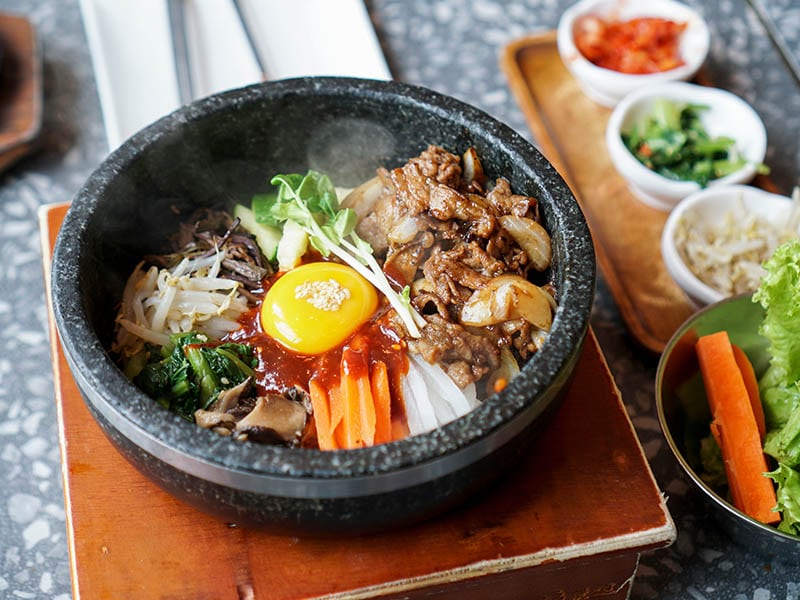
In 2011, the readers of CNN Travel voted Bibimbap as one of the world’s 50 most delicious dishes. While most people only know about the “mixed rice” (the literal translation of the name) from South Korea, the northern version will win you over in the same way.
The preparation of this dish depends on the availability of local produce. Find all kinds of vegetables you can get your hands on and saute them. With a bowl of rice, you place them on top alongside Kimchi, Gochujang, or Doenjang (a fermented soybean paste).
However, complete Bibimbap should also have an egg and a slice of meat as garnishes. They can be cooked or, for more freshness, raw. Ensure that you remove those delightfully crunchy rice morsels from the sides, and feel free to incorporate additional gochujang.
The history of Bibimbap spans hundreds of years, first appearing as an ancestor offering as well as a convenient dish for peasants.
2. Dububap – Fried Tofu Stuffed With Rice
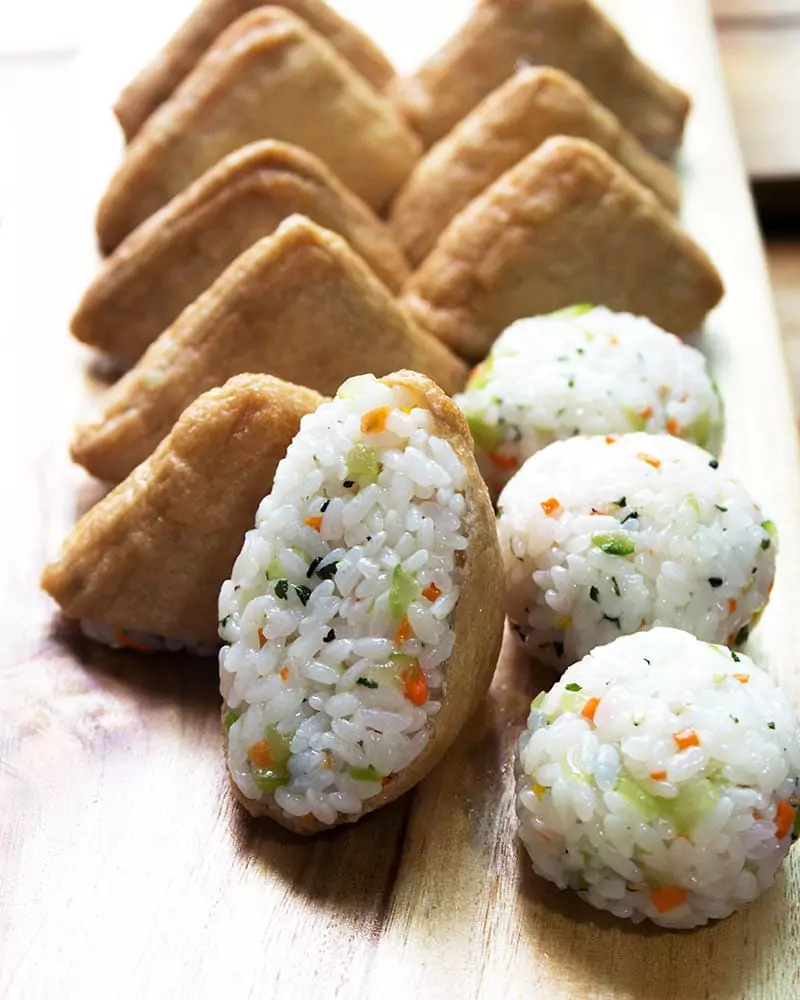
This is the essence of North Korean cuisine in a nutshell. Also known as Tububap, it is popular with many local families as well as international travelers to the “Hermit Kingdom”. The name translates as “tofu rice”, which perfectly captures the essence of this dish.
Locals prepare this wonderful Korean breakfast dish by wrapping or stuffing slices of fried tofu with rice. Some accompanying spicy sauce will bring out the crispy, fatty quality of the tofu. Dububap also goes well with salads or boiled vegetables.
3. Pyongyang Onban – Pyongyang Rice Dish
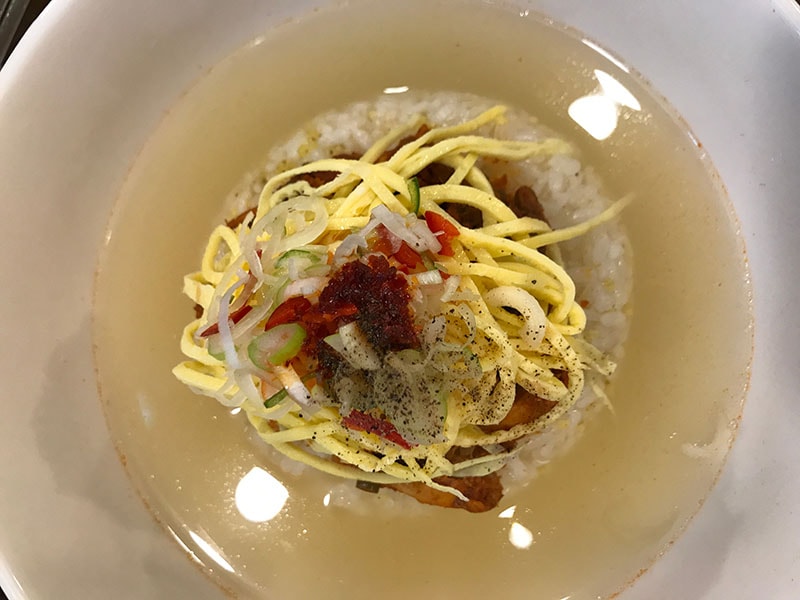
This is a simple yet yummy dish from Pyongyang, the capital of North Korea. Rumor has it that the dish owes its creation to a housewife. While hurriedly preparing food for her husband in prison, she whipped it up from leftovers and accidentally invented a heavenly delight.
Humble in origin, Pyongyang Onban is now a must-have North Korean recipe for important celebrations and holidays. It mainly consists of steamed rice, shredded chicken, and dried mushrooms.
But the dish isn’t complete yet. Drizzle a chicken broth over and put slices of hard-boiled eggs as well as a green bean pancake. Now Pyongyang Onban is ready to serve any foodie wishing for a flavorful, healthy delicacy.
4. Injo Gogi Bap – Rice Wrapped In Fake Meat
Injo Gogi Bap means something like “rice with fake meat”. It was born in the 1990s when North Korea suffered from acute famine. When real meat was as scarce as hen’s teeth, people got creative with this recipe.
Whipping it up is ridiculously easy. All you need to do is to wrap a slice of soybean paste around Kimchi-mixed boiled rice and dip it in sweet and spicy chili sauce. With the dark memories behind it, Injo Gogi Bap is a healthy, low-fat snack that you can munch on at any time.
North Korean Soups and Noodles Dishes
The world of North Korean soups and noodles feature a delightful combination of flavors and textures. These comforting, satisfying dishes play an integral role in the nation’s culinary landscape and provide a warm, inviting experience for all to enjoy.
5. Sungeo-guk – Taedong River Gray Mullet Soup
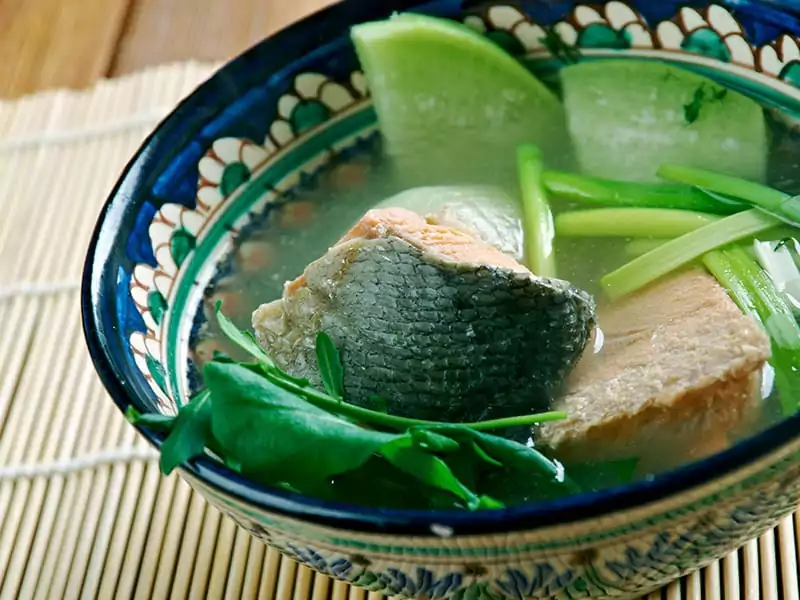
It would be a capital mistake to leave out the special gray mullet soup known as Sungeo-guk, which is one of the most delicious North Korean dinner dishes. The gray mullet is highly abundant in the Taedong River, which flows through Pyongyang on its way to Korea Bay.
The gray mullet from the river has a reputation for being of excellent taste. After cleaning and gutting the fish, locals will season it with black pepper before cooking it with garlic, ginger, onions, and spices. When the oven is off, a steaming, finger-licking Korean soup is ready to serve.
Except for summer, when the fish isn’t at its best, you can enjoy Sungeo-guk year-round. The soup is so important to local culture that “How was the flathead gray mullet soup?” is a common way to greet someone coming back from Pyongyang.
6. Mul Naengmyeon – Pyongyang-Style Buckwheat Noodle
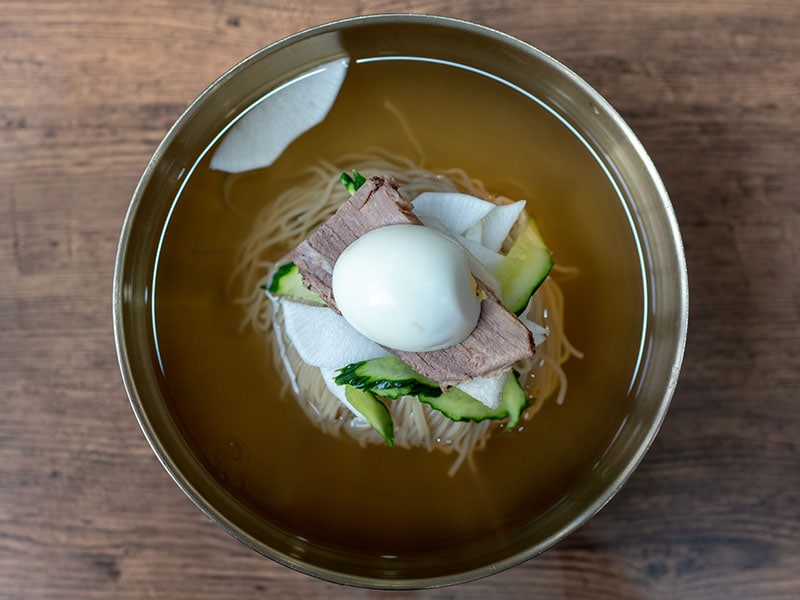
Few dishes can scream their North Korean identity as convincingly as this one. Of course, Naengmyeon is widely available in South Korea, but it started as a northern specialty during the Joseon Dynasty (1392-18970). The delicious Korean noodle types became popular in the South after the Korean War.
There are varieties of Naengmyeon, but most people will automatically think of the Pyongyang-style Mul Naengmyeon. In essence, it is a beef or chicken/ pheasant noodle soup, possibly with the addition of dongchimi (a type of cold Kimchi) broth.
While rice is the staple food in North Korea, the chewy noodles for this traditional North Korean dish are always made from buckwheat. Although many people refer to Mul Naengmyeon as a “cold noodle”, it can be enjoyed both hot and cold.
North Koreans usually eat it with hard-cooked eggs, sliced cucumbers, and especially sugar. Sweetening the noodle soup with sugar garnish is a way of serving unique to the North.
7. Hoe Naengmyeon – Cold Noodle With Fish
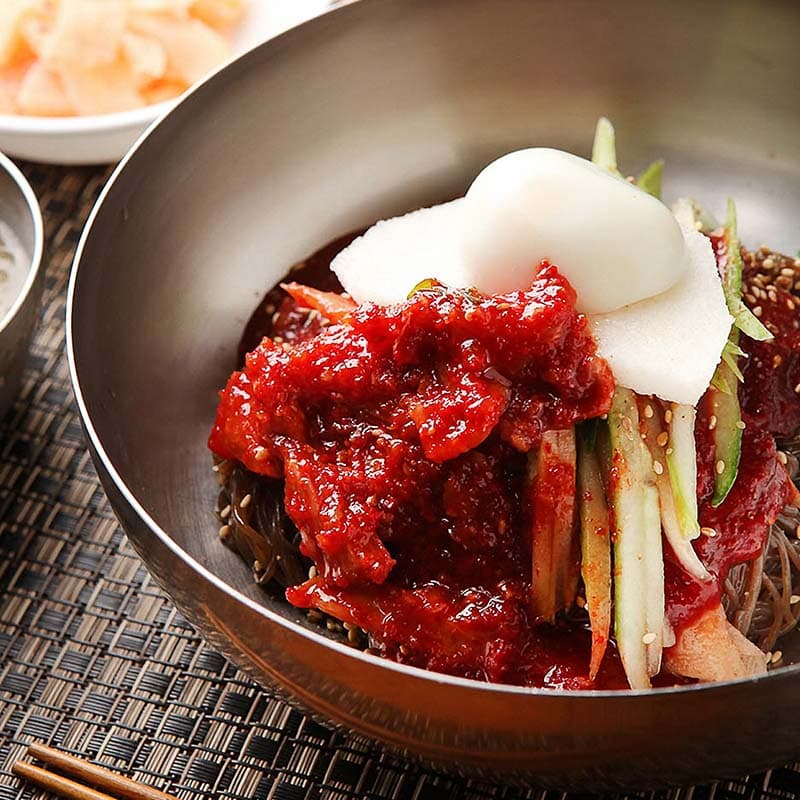
Hamhung is the second-largest city in North Korea. It has an interesting local take on the classic Naengmyeon that foreign tourists shouldn’t miss out on. I give you Hoe Naengmyeon made from raw marinated fish.
A coastal city, Hamhung enjoys an abundance of fresh seafood, especially the nutty, stingray-like skate. Local inhabitants separate its fresh flesh from the cartilage, soak it in vinegar, and add it to the noodle along with dried squid, cucumbers, sliced hard-boiled eggs, etc.
A departure from conventional Naengmyeon lies in the use of potato or sweet potato starch for noodles instead of buckwheat. The result is a chewy and silkier Naengmyeon. In addition, the Hamhung version is spicier because people often pair it with Gochujang (red chili paste).
Other North Korean Food Options
Explore the fascinating realm of alternative North Korean food options, showcasing the country’s rich culinary heritage and unique flavors. These lesser-known, yet equally scrumptious dishes provide a chance to broaden your palate and gain new insights into the diverse North Korean gastronomy.
8. North Korean Kimchi
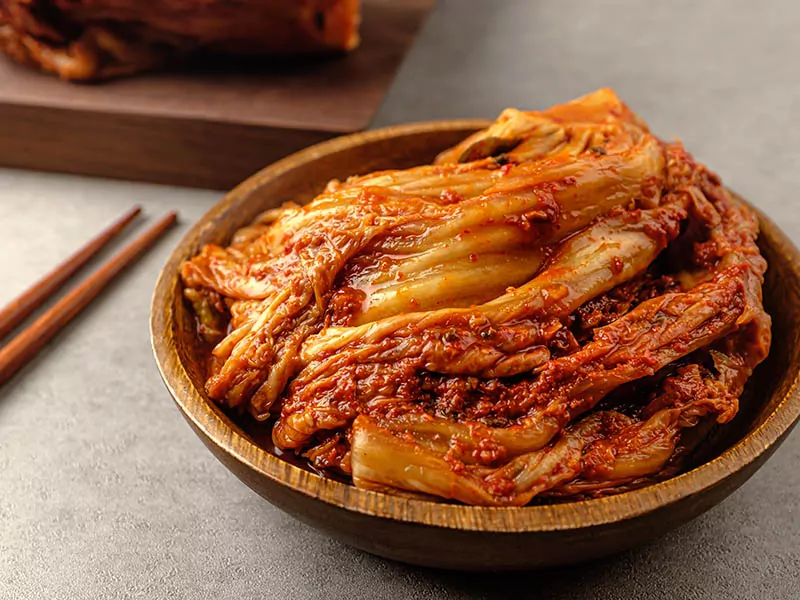
The North and the South may not see eye to eye in many aspects, but they are firmly united in their love for Kimchi – an iconic Asian vegetarian dish.
North Korean signature dishes can’t be complete without these salted and fermented vegetables. They pair well with all kinds of foods, not least marinated meat.
It is rather difficult to pinpoint exactly when Kimchi first appeared in Korean cuisine. But the time was probably somewhere after the beginning of the first millennium and around the country’s period of the Three Kingdoms. Contemporary records suggest the extensive use of pickled vegetables.
But you will be blown away to know that the signature spicy taste of Kimchi is a relatively modern invention. A native American crop, chili pepper, didn’t exist in the old Eurasia. It didn’t arrive in Korea until the 17th century, but when it did, it transformed the country’s foods forever.
Chili-flavored is now something like the national dish for the two Koreas. But the North Korean version has some differences. For example, it is lighter in color, less spicy, but tangier in taste than the Southern variety.
Learn the correct way to prepare North Korean Kimchi with style here.
9. Pansangi – Collection Of Dishes In Bronze Bowls
The highlight of any tour to North Korea is to have a party of Pansangi (also called Banchan or Bansang) in Kaesong. Close to the border with South Korea, Kaesong enjoys a special status and easy access to eager tourists, with Pansangi as one of its many charms.
Basically, Pansangi isn’t a single dish but more like a preparation technique. It is a collection of various dishes (such as meat, egg, tofu, kimchi) contained in small bronze bowls. Accompanying them is plenty of rice, soup, and Korean liquor.
If you are wondering about the use of bronze bowls, it is a practice dating back to the Goryeo Dynasty decades ago. The number of the bowls (often 9 – 12) demonstrates the status of the guests; bigger means more renowned. When you sit down for Pansangi, don’t forget to count!
10. North Korean Ox Trotter Aspic
Aspic is a jelly dish made from meat stock/ broth gelatin encasing various ingredients. In many countries, those ingredients can be chicken, fish, or pork. But in North Korea, ox parts are the star of the show.
While the most common ingredients are the ox trotter, people use the tail and tendons as well. The most important step to give the dish its soft, transparent texture is to cook everything over a slow fire for many hours. This will create a thick broth that releases gelatin.
While cooking, you can add vegetables to the mixture to enrich it. The usual options are mushrooms, leeks, peppers, among other things. At the end of the process, leave the mixture to cool into a savory dish of aspic whose suitable accompaniment is horseradish or mustard.
11. Bindaetteok – Mung Bean Pancake
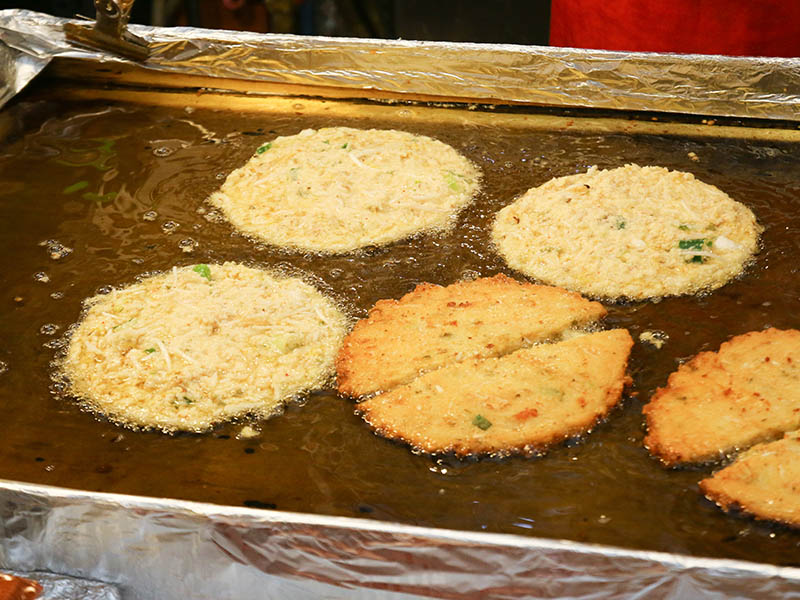
Just like the merry people in the south, North Koreans have a penchant for alcoholic drinks. While the traditional liquor Soju is the most famous Korean beverage for grownups, local beer is well-known to both locals and tourists. Ideally, it goes well with the equally traditional pancake Bindaetteok.
If you are feeling confused, don’t be. This ostensibly popular Korean street food originated from the former Pyongan Province, which the present-day capital Pyongyang is a part of. So you can rest assured that this is an authentic North Korean dish.
In short, this spectacular Asian side dish is a fried pancake made from mung beans, fermented cabbage, and pork. Hot, greasy Bindaetteok straight out of the pan is best enjoyed with soy sauce as a nutritious snack or a side dish with beer.
12. Mandu – Dumplings
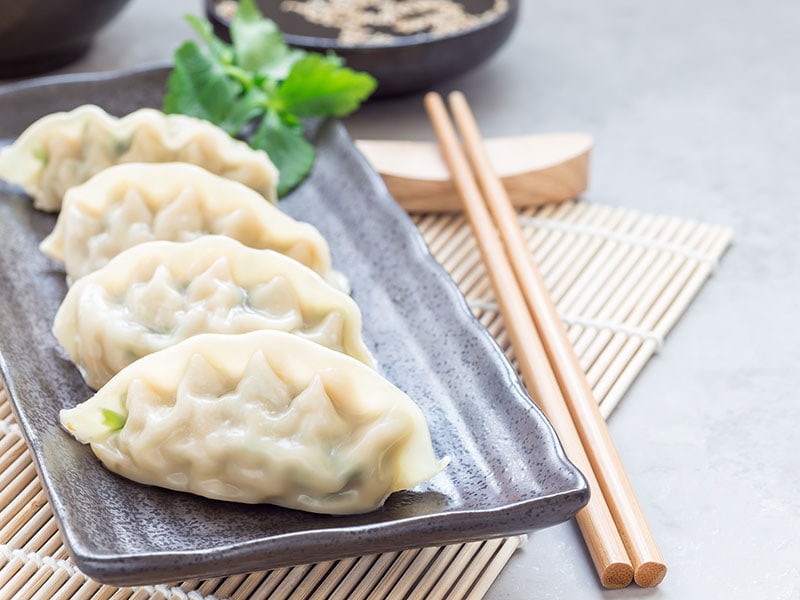
Mandu plays an important part in both North and South Korea. They are dumplings cooked in different styles, such as boiling, steaming, pan- or deep-frying. Regardless of cooking methods, Mandu is so delicious.
There are different Mandu varieties as well. But the most famous one in this country is Pyongyang mandu, and Pyongyang is the capital of North Korea. The locals usually enjoy it on special occasions, such as celebrating New Year.
Making Mandu is not too difficult! You can make them from scratch and customize the ingredients based on your preference.
13. Hotpot
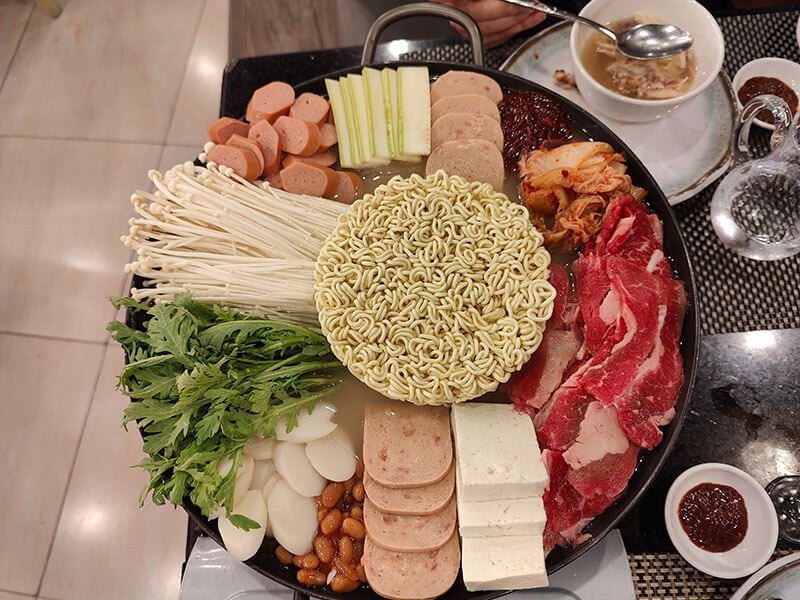
Here is the ultimate comfort food to warm your heart on those chilly Pyongyang nights – an enticing, steaming pot of North Korean-style.
This hot pot features a harmonious blend of sticky noodles, succulent meat, tender tofu, and an array of rare, colorful vegetables, creating a complex symphony of flavors.
Savor this mouthwatering dish at any Hot Pot Restaurant in Pyongyang, where you can delight in the luxury of tailoring your culinary experience. You can season your steaming broth with the perfect balance of salt, pepper, and fiery chili to suit your sophisticated palate.
And for that extra umami kick, don’t forget to sprinkle on some of that magical, crystalline MSG – a flavor enhancer that elevates the dish to new heights of deliciousness.
Each spoonful of this divine concoction provides a captivating fusion of textures and flavors. So go ahead, and let this sumptuous North Korean hot pot whisk you away on a gastronomic journey that celebrates the rare and complex in every bite!
FAQs
Are you curious about the world of North Korean foods? Dive into my frequently asked questions section to uncover the answers to your burning culinary queries!
Delicious North Korean Foods Decoded
You may not know many things about North Korea, but it is worth your effort to learn about its yummy dishes. Good food knows no boundary or separation, a simple philosophy that life will be all the better with it.
Finding and enjoying 100% North Korean foods can be somewhat of a challenge. But let’s consider it a treasure hunt that is beset with difficulties that stop you from reaching a wealth of riches. And riches you shall have when you have a bite of these amazing northern dishes.
If you like this post, feel free to share it with your friends and loved ones. Please feel free to voice your thoughts and opinions in the comment section. Many thanks, and may you soon experience the scrumptiousness of North Korean foods.
